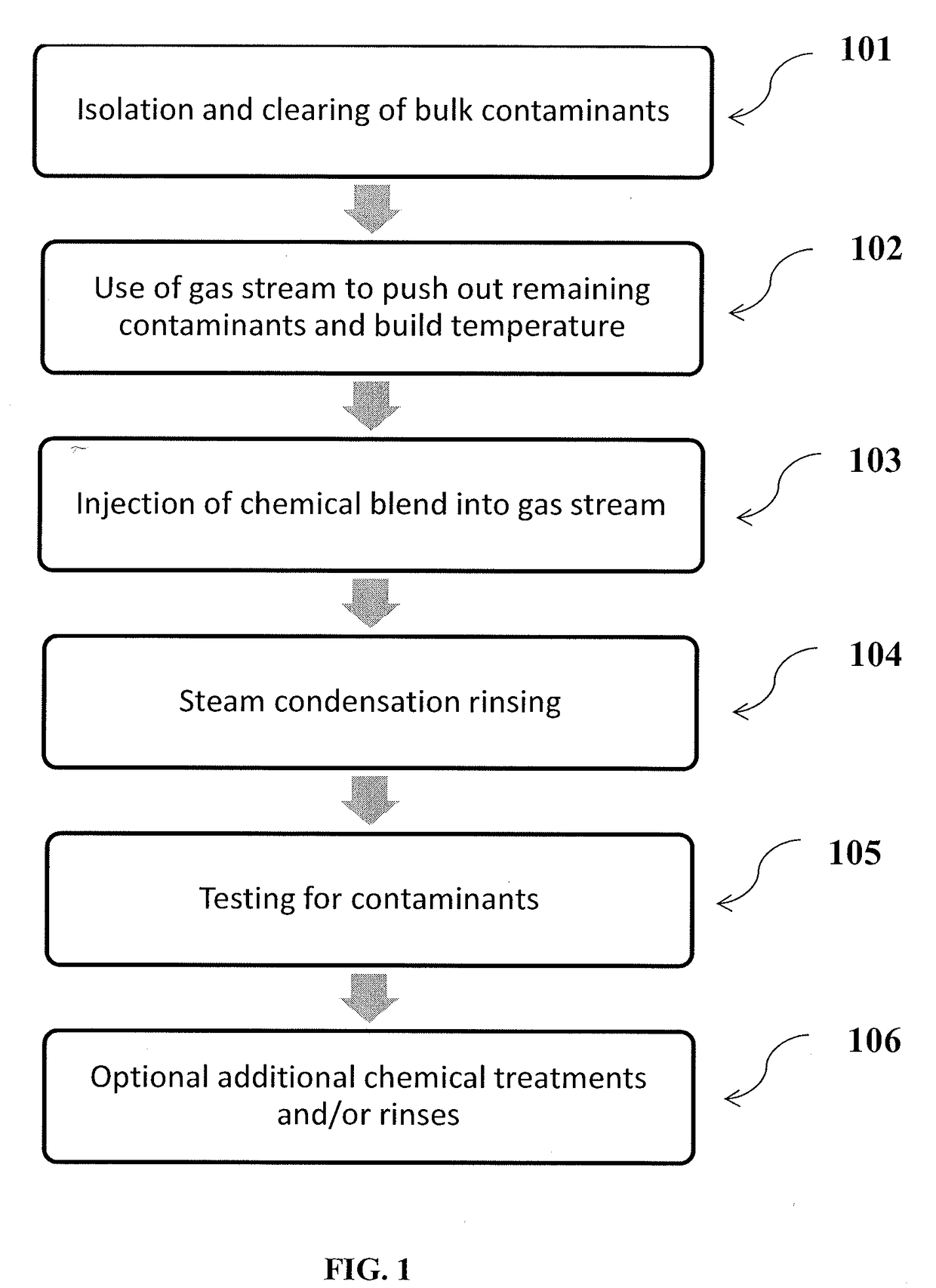Decontamination and cleaning process for hydrocarbon contaminated equipment
a technology for cleaning process and hydrocarbon contaminated equipment, which is applied in the preparation of detergent mixture composition, cleaning using liquids, and cleaning hollow articles, etc., and can solve the problems of equipment out of service, system cannot be exposed to air, and facilities experience significant financial losses
- Summary
- Abstract
- Description
- Claims
- Application Information
AI Technical Summary
Benefits of technology
Problems solved by technology
Method used
Image
Examples
Embodiment Construction
[0015]The present invention is directed to an improved process for the cleaning of equipment contaminated with hydrocarbon material during turnaround periods, for example, periods when the equipment is out of service. In particular, the present invention relates to a process for removing noxious gases and cleaning hydrocarbon contaminants from equipment that is taken out of service including injecting a suitable solvent into the contaminated equipment with a gas stream, such as steam, and an additive. Advantageously, the combination of the steam and the chemical blend of the suitable solvent and additive dissolves harmful hydrocarbon material and removes noxious vapors from the equipment making it safe for facilities to allow personnel to access the internal portions of machinery. Indeed, according to the present invention, the solvent and additive condense in the equipment due to the steam flow. This, in turn, allows for the cleaning solution to penetrate equipment interstices and ...
PUM
 Login to View More
Login to View More Abstract
Description
Claims
Application Information
 Login to View More
Login to View More - R&D
- Intellectual Property
- Life Sciences
- Materials
- Tech Scout
- Unparalleled Data Quality
- Higher Quality Content
- 60% Fewer Hallucinations
Browse by: Latest US Patents, China's latest patents, Technical Efficacy Thesaurus, Application Domain, Technology Topic, Popular Technical Reports.
© 2025 PatSnap. All rights reserved.Legal|Privacy policy|Modern Slavery Act Transparency Statement|Sitemap|About US| Contact US: help@patsnap.com

